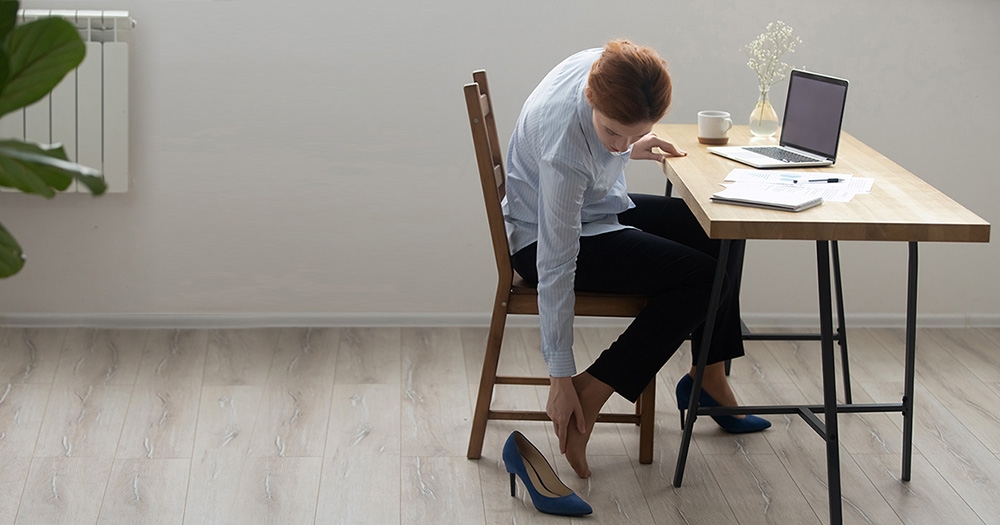Your ankles may seem small, but these complex joints play a starring role in your ability to stand, walk, run, turn, and move on your feet. Three main bones,tendons and ligaments, and cartilage help keep your motions smooth and pain free.
A problem with any one of these components can spell serious ankle trouble. We may specialize in diagnosing and treating ankle injuries or disease with minimally invasive arthroscopic ankle surgery, but at Ortho 1 Medical Group, with four offices in San Diego County, California, our providers understand it’s better to avoid ankle problems than fix them.
Here’s a look at some unhealthy habits you may have that are putting your ankles at risk and how you can improve your ankle health.
1. You’re wearing the wrong shoes
You know that when you exercise or play a sport, you need to wear the right shoes. But to prevent ankle problems and injuries, it’s essential to wear supportive, well-fitting shoes at other times, too.
Unsupportive shoes, high heels, and shoes that just don’t fit right increase the risk of foot and ankle injuries. This is because they make it easier to stumble, trip, or fall and they don’t give your feet and ankles the added support and balance needed for optimal foot and ankle health.
The team at Ortho 1 Medical Group makes personalized shoe recommendations customized for your lifestyle and foot and ankle condition.
2. You’re skipping leg day
If you’re not spending some of your workout time focusing on the strength of your lower legs, you’re not giving your ankle enough protection against injury. Stronger lower leg muscles strengthen your ankles, improving stability.
One easy way to build this strength is by performing calf raises. Stand with your feet slightly apart. The best place is on the edge of a step with your heels hanging off.
If you need help or support to balance, hold the handrail or the back of a chair. Lift your heels until you’re standing on your toes. Then lower to the starting position. For extra range of motion, lower your heels below the edge of the step.
Repeat 10-20 times. As you get stronger, try standing on one foot or holding hand weights while performing this exercise, or increase your repetitions.
3. You don’t exercise your ankles
If you’re not doing lower leg exercises, chances are good that you also skip exercises specifically designed to promote ankle health.
The good news is that it only takes minutes a day to improve your ankle mechanics, improve ankle strength, boost range of motion, and lower your risk of developing an ankle injury or condition.
Here are two simple ankle exercises to incorporate into your day:
Write Your ABCs
Sit on a chair or ground with your knees bent. Lift one foot off the floor and use it to “write” the letters of the alphabet in the air. You can use cursive or print. Repeat with the other foot.
Draw air circles
Sit with your knees bent on the ground or a chair, or lie on your back. Lift one leg and rotate your ankle in a circle, going in a clockwise direction. Be sure to move deliberately, pushing through your ankle’s full range of motion.
Complete 20-30 circles. Then complete 20-30 circles in a counterclockwise direction. Repeat with the other leg.
4. You’re not stretching
When you keep the soft tissues and muscles that support your ankle limber and loose, your risk of getting an ankle injury or developing a degenerative disease goes down. Unfortunately, many people don’t spend time stretching their ankle.
Our team uses a simple stretching exercise, called “point and flex,” to help our patients improve their ankle function. Lie on your back with your heels on the floor and your toes up. Point your toes away from your body. Hold them at the farthest point for 5-10 seconds.
Then pull your toes back to your body as far as you can. Hold this stretch for 5-10 three seconds. Repeat 10-20 times. You can also do this exercise one leg at a time.
5. You don’t include balance work
If you don’t include balance work in your exercise routine, you’re not protecting your ankles. Good balance lowers your risk of all injuries — especially leg, ankle, and feet injuries. You can double down and balance on one leg to strengthen your ankle joint while boosting your balance.
Stand on both feet, then lift one foot off the floor. Hold this stance for 20-30 seconds. Repeat with your other leg. As your balance improves, add time. You can also do the exercise on unstable surfaces or with your eyes closed for a bigger challenge.
If you can’t balance on one foot, use a chair or countertop for support. You can sneak in balance work by standing on one leg when performing everyday tasks, like brushing your teeth.
For personalized recommendations about how you can reduce your risk of ankle injury or disease, or for help with an existing ankle problem, schedule an appointment with a provider at the Southern California Ortho 1 Medical Group office nearest you.





















